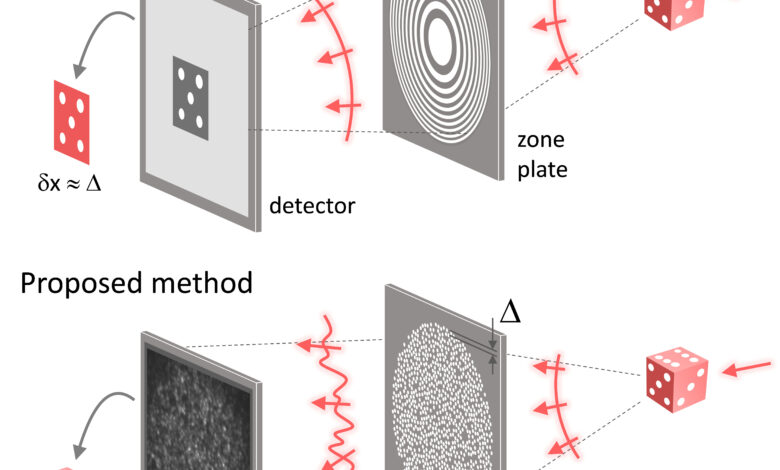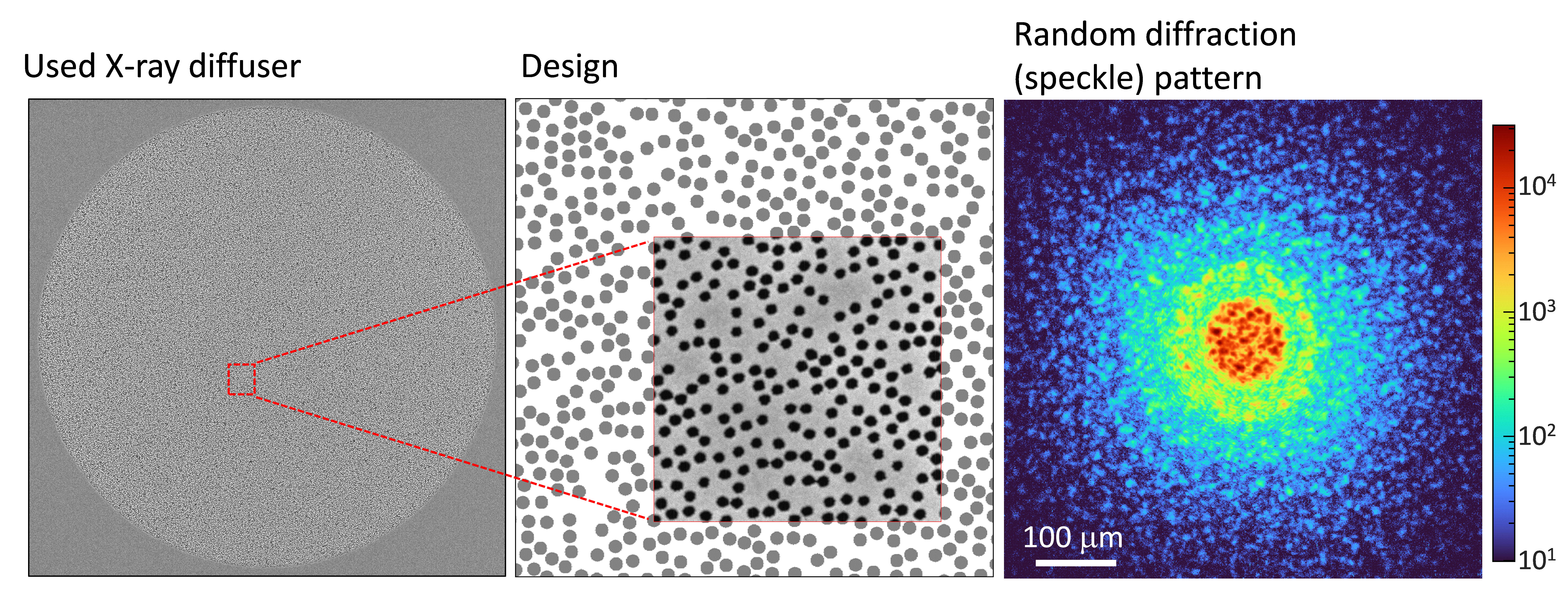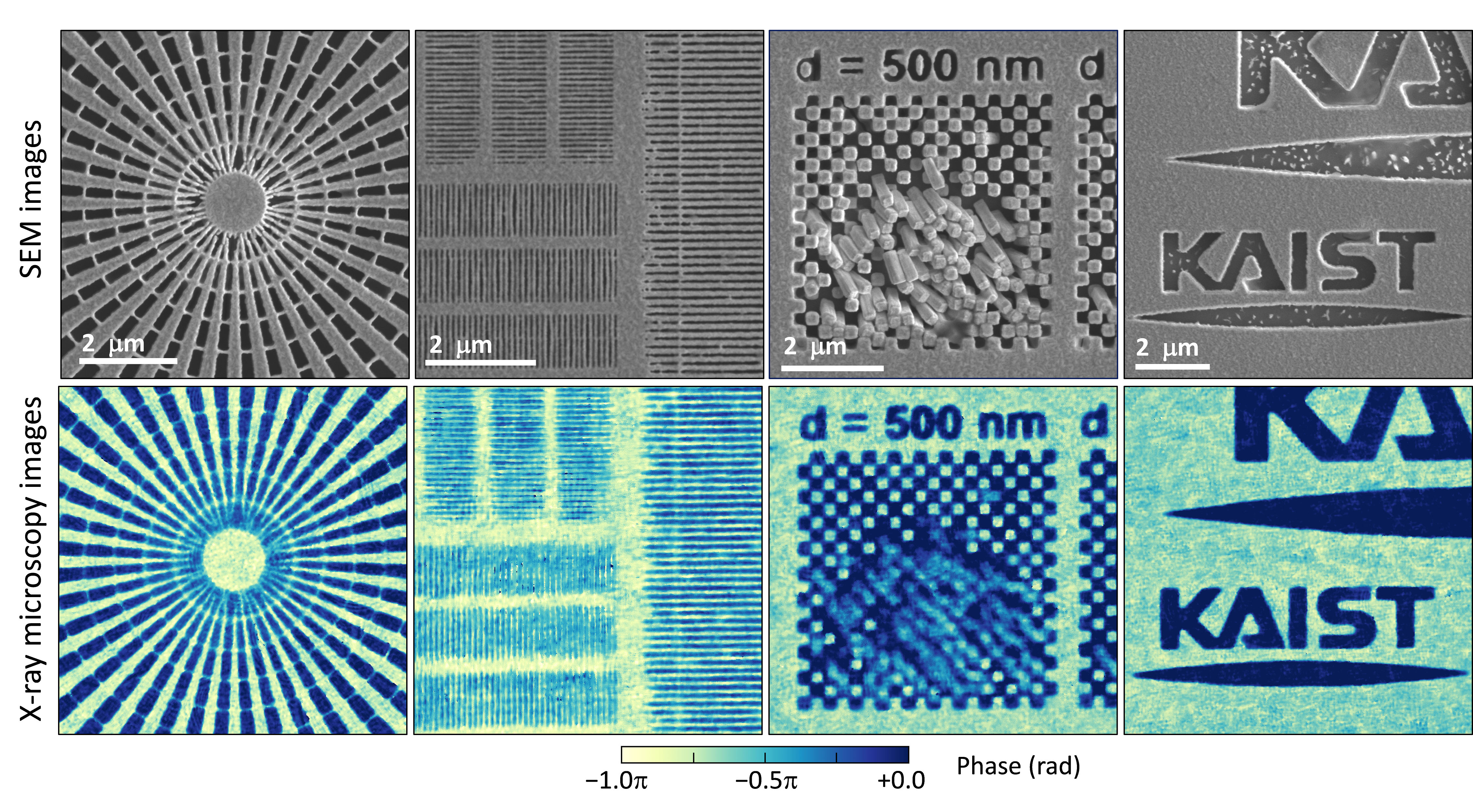
Researchers find key to overcoming limitations in X-ray microscopy?
(Nanowerk News) X-ray microscopy has the advantage of penetrating most substances, so that internal organs and the skeleton can be observed non-invasively via chest X-ray or CT scan. Recently, research to increase the resolution of X-ray imaging technology is being actively carried out to precisely observe the internal structure of semiconductors and batteries at the nanoscale.
KAIST announced that a joint research team led by Professor YongKeun Park from the Department of Physics and Dr. Jun Lim of the Pohang Accelerator Laboratory has successfully developed a core technology that can overcome the resolution limitations of existing X-ray microscopes.
This study, in which Dr. KyeoReh Lee participated as first author, published in Light: Science and Applications (“Direct high-resolution X-ray imaging exploits pseudo-randomness”).
X-ray nanomicroscopes do not have a refracting lens. In an X-ray microscope, circular grids called concentric zone plates are used instead of lenses. The resolution of the images obtained using zone plates is determined by the quality of the nanostructures that comprise the plates. There are several difficulties in fabricating and maintaining these nanostructures, which set the resolution level limit for X-ray microscopy.
The research team developed a new X-ray nanomicroscopy technology to address this problem. The X-ray lens proposed by the research team takes the form of many holes punched in a thin tungsten film, and generates random diffraction patterns by diffracting the incident X-rays. The research team mathematically identified that, paradoxically, the high-resolution information of the sample is completely contained in this random diffraction pattern, and actually managed to extract the information and image the internal state of the sample.

An imaging method using the mathematical property of random diffraction was proposed and implemented in the visible band for the first time by Dr. KyeoReh Lee and Professor YongKeun Park in 2016 (Nature Communications, “Utilizing a speckle correlation scattering matrix for a reference-free holographic image sensor”). This study uses the results of previous studies to solve a difficult and lingering problem in the field of X-ray imaging.
The resolution of the constructed sample image has no direct correlation with the size of the etched pattern on the random lens used. Based on this idea, the research team was able to obtain images with a resolution of 14 nm (roughly 1/7 the size of the coronavirus) using random lenses made in a circular pattern with a diameter of 300 nm.
The imaging technology developed by the research team is the main basic technology that can increase the resolution of X-ray nanomicroscopy, which has been hindered by the limited production of existing zone plates.

The first author and one of the co-authors, Dr. KyeoReh Lee of the KAIST Physics Department, said, “In this study, the resolution is limited to 14 nm, but if a next-generation X-ray light source and high-performance X-ray detector are used, the resolution will exceed that of conventional nano-X-ray imaging and approach electron microscope resolution.” and added, “Unlike electron microscopy, X-rays can observe internal structure without damaging the sample, so it will be able to present a new standard for non-invasive nanostructure observation processes such as quality checks for semiconductors.”
Co-author, Dr. Jun Lim from the Pohang Accelerator Laboratory, said, “In the same context, the developed image technology is expected to improve the performance of the 4th generation multipurpose radiation accelerator to be established in Ochang. from North Chungcheong Province.”






